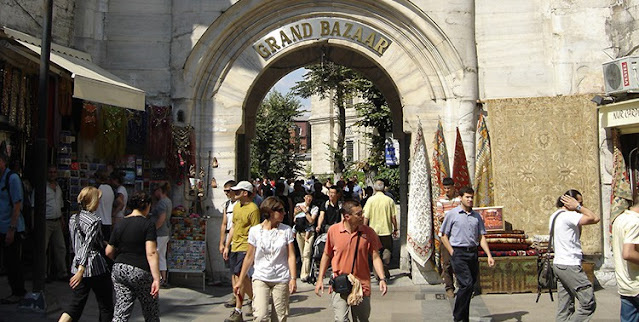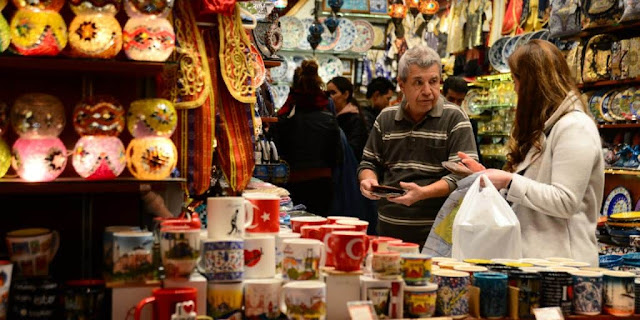The Grand Bazaar - A Small Town
One of Istanbul's most intriguing sites is the Kapali Carsi, often known as the Covered Bazaar or Grand Bazaar. Over 250 years, this labyrinth of vaulted roofed twisting lanes and domed structures formed. Sultan Mehmed II (1451-1481) built two stone bedestens, or exchanges, as a source of money for the Ayasofya Mosque in the 15th century (today, Haghia Sophia Museum). The Cevahir and Sandal Bedestens, respectively, were the commercial heart of Istanbul, with countless kiosks and shops constructed around them. The bazaar as we know it today evolved from the pathways lined by these stores being roofed over for the convenience of customers. Traders may keep and sell their precious goods at this location. Over the three centuries, since it reached its ultimate shape about 1700, this old retail centre has been severely damaged by earthquakes and fires.
If you are in Istanbul and few days are remaining of tourist turkey e visa then move to the Grand Bazaar for a day trip, this could be the unforgettable trip of your life.
The earthquake in 1766 and fires
in 1791 and 1826 followed the flames of 1701 and 1750. Then followed the big
earthquake of 1894 and, most recently, the fire of 1954, which required five
years of repair work. It's easy to get lost or wander in circles if you're
unfamiliar with the Kapaliçarsi and don't have a map. It spans 30.7 hectares
(75.8 acres), with 5000 shops and 61 streets, 10 wells, four fountains, two
mosques, and several cafés and restaurants. The bazaar employed about 25,000
people full-time, with an undetermined number of street vendors selling their
products in and around it. The unofficial foreign exchange market and Turkey's
gold market are both headquartered here.
The unique ambience of this grand bazaar, a miniature city inside a metropolis, has attracted visitors to Istanbul for ages. The Cevahir Bedesten, also known as the Eski or iç Bedesten, is located in the heart of the complex. Because shops opened at early light and closed at dark, the bazaar was only illuminated by high windows beneath the vaults in the past. Copperware, amber prayer beads, inlaid weaponry, icons, mother-of-pearl mirrors, water pipes, walking sticks, watches and clocks, candlesticks, ancient coins, and silver and gold jewellery set with coral and turquoise were all found here in the past and are still found here today.
The Sandal Bedesten (also known
as the Yeni or Küçük Bedesten) is a 15th-century hall with 20 domes in the
northeast corner. Part of the bazaar's allure is the wayward, almost random
layout of the other sections. Multiple commercial buildings known as hans
surround the market itself, each a maze of small workshops on several floors,
frequently named after trades, such as Varakçi (Gold Leaf Maker) Han, which has
since been replaced. Until the end of the nineteenth century, a family could go
to the Kapaliçarsi and buy new clothes from head to toe, all of their furniture
and household linen, have seal rings carved to order, and even arm the master
of the house with a choice of weapons; all under one roof.
Souvenirs and presents seem to be the most popular items these days, with carpets and jewellery coming in second. The numerous traders are still grouped along particular streets, whose names frequently refer to goods long since gone. Helmet makers, Fez makers, Napkin makers, Quiltmakers, Calligraphers, and Book Dealers, to mention a few, line the streets. The book merchants have subsequently relocated from the primary market to Sahaflar Carsisi, a small open-air bazaar near Beyazit Gate. One of the most significant ways to replicate the romantic ambience of ancient Istanbul is to spend a leisurely afternoon visiting the bazaar, sitting in one of the cafés and watching the throng pass by, and bargaining for items.
If you need an assistant to apply
for a turkey visa online, visit our website
and connect with our visa expert via WhatApp, email and phone.






Comments
Post a Comment